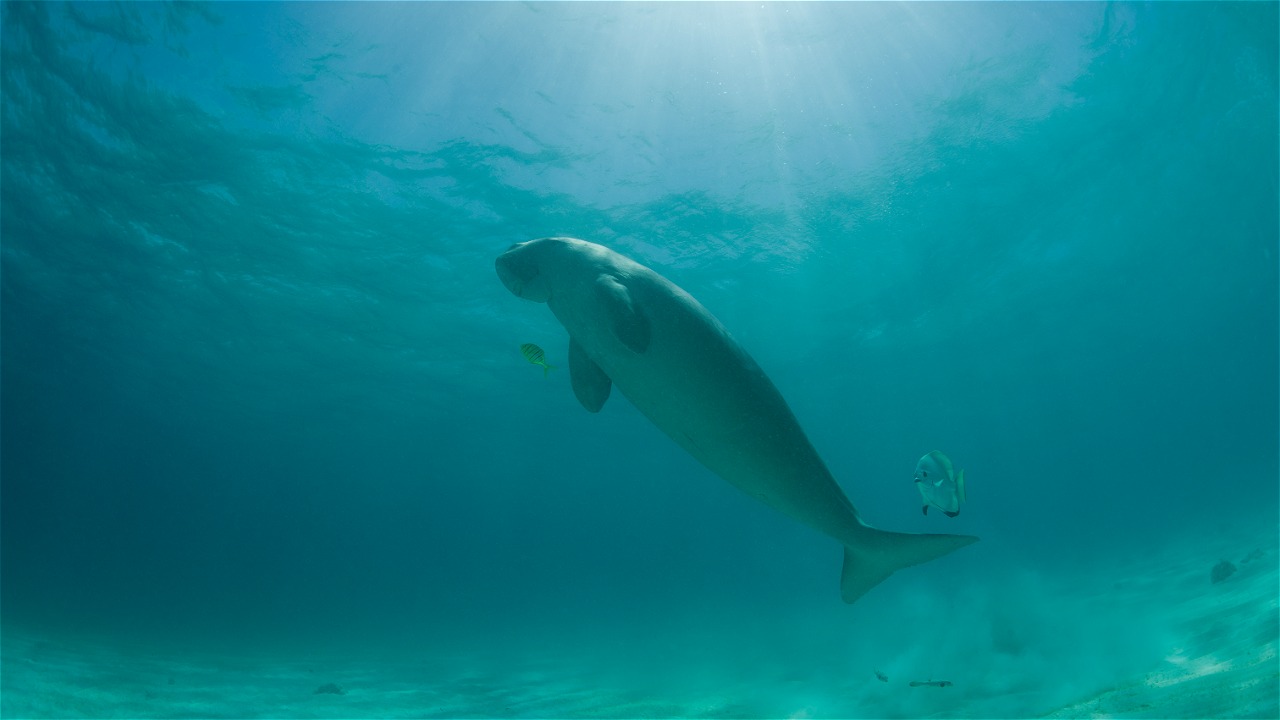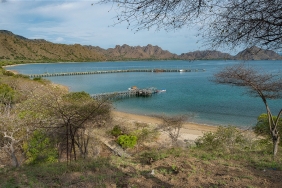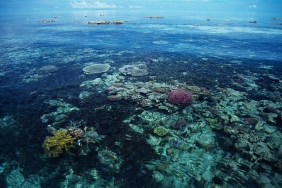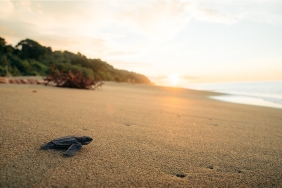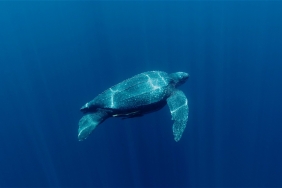DUGONGS AND THEIR HABITATS NEED URGENT ATTENTION
Bogor 20/4 - Threats to the Dugong population continue to increase and require urgent attention for an integrated effort between related parties and a conservation model approach. Data and a number of supporting information are needed as a scientific basis for setting long-term policy directions and formulating management of Dugong and its habitat in Indonesia," said Director General of Marine Spatial Management Brahmantya Setyamurti Poerwadi, S.T, at the 2016 National Dugong and Seagrass Habitat Symposium with the theme "Joint Initiatives for the Preservation of Dugong Populations and Seagrass Habitats in Indonesia", which was jointly initiated by the Ministry of Maritime Affairs and Fisheries in collaboration with WWF Indonesia, the Indonesian Institute of Sciences (LIPI), and Bogor Agricultural University (IPB).
Dugong and habitat conservation efforts in Indonesia are not only carried out by the government but also supported by a number of international institutions, such as the United Nation Environment Programme-Conservation Migratory Species (UNEP-CMS) in collaboration with the Mohamed bin Zayed Species Conservation Fund (MbZ) through the Dugong and Seagrass Conservation Project (DSCP) program. DSCP is a regional program implemented in seven countries, namely Indonesia, Malaysia, Sri Lanka, Mozambique, Madagascar, Timor Leste and Vanuatu. In addition to Dugong conservation, the Ministry of Maritime Affairs and Fisheries also encourages regions to initiate seagrass ecosystems as a key habitat for Dugong to become Regional Marine Protected Areas (MPAs).
The rate of seagrass destruction in Indonesia, especially seagrass meadows, also contributes to the increasing threat of Dugong extinction. The area of seagrass meadows in Indonesia is estimated at 31,000 km2. However, data from the Oceanographic Research Center of the Indonesian Institute of Sciences (P2O-LIPI) states that so far, only 25,752 ha of seagrass beds have been validated from 29 locations in Indonesia. The size of the Dugong population in Indonesian waters is still uncertain due to the limited number of surveys and population studies that have been conducted, while Dugong stranding events have been recorded in various coastal locations in the archipelago.
Dirhamsyah, Head of P2O-LIPI Center said, "Seagrass habitat conditions greatly affect the existence of Dugong, so the distribution of these animals is limited to coastal areas where seagrass plants can develop. Dugong habitat needs to be maintained so as not to threaten the population of this marine mammal. Dugong conservation is closely related to the existence of seagrass beds," he said. "Seeing the phenomenon of Dugong population decline in Indonesia, it is very necessary to exchange data and study results related to Dugong and its habitat. In addition, meetings between policy makers, academics, researchers and practitioners who understand Dugong and seagrass habitats really need to be carried out in order to develop recommendations for saving Dugong populations and seagrass habitats," he said.
WWF Indonesia's Coral Triangle Program Director Wawan Ridwan said, "The lack of data and information on the distribution of Dugong populations with the level of threat makes it difficult for management authorities to determine the priority of conservation action plans. The National Symposium on Dugong and Seagrass Habitat is the basis for obtaining the latest information and status for future conservation efforts."
Dean of the Faculty of Fisheries and Marine Science of IPB Dr. Ir. Luky Adrianto, M.Sc added that conservation actions towards Dugong and seagrass habitats in Indonesia need to be linked to the strategic role and function of seagrass in providing fish resources in a sustainable manner. "There, we can play a pioneering role and initiate more comprehensive conservation actions by involving fishermen and other stakeholders in coastal areas, especially through the Seagrass-Ecosystem Approach to Fisheries Management (Seagrass-EAFM)," he added.
The forum, which was held on April 20-21, 2016 at the IPB International Convention Center, Bogor, brought together experts to develop guidelines for monitoring seagrass and dugong. In addition to the four key papers representing symposium topics for parallel sessions, 49 papers were selected from 74 abstracts submitted in a short period of time and passed the selection to be presented at the symposium. The four paper topics discussed with policy makers, academics, researchers and practitioners were (1) Dugong-seagrass conservation institutions and networks, (2) Dugong biology and populations, (3) distribution and feeding habitats, and (4) threats and sustainable use.

